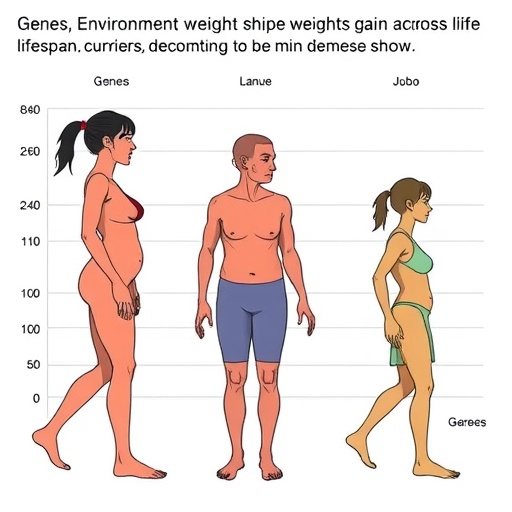In a rapidly evolving healthcare landscape, the integration of design thinking into the educational framework of nursing programs is gaining traction, particularly among Taiwanese nursing students. In an insightful longitudinal study by Liu HY, published in BMC Nursing, researchers delved deep into the self-perceived competence in design thinking among nursing students in Taiwan. This groundbreaking research sheds light on how design thinking can enhance clinical skills and patient-centered care, equipping future nurses with essential tools suited for modern-day challenges.
At the core of this study lies the concept of “design thinking,” an approach traditionally associated with fields like product design and technology. Design thinking encapsulates a human-centered methodology characterized by empathy, ideation, prototyping, and testing. Liu’s research illustrates the applicability of this methodology in nursing education, emphasizing that fostering a design mindset is critical in equipping nursing students for the intricacies of patient care and healthcare delivery systems.
The longitudinal aspect of the study is particularly noteworthy as it captures the progression of self-perceived design thinking competence over time. Conducting assessments at multiple intervals allows for a comprehensive analysis of how nursing students’ perceptions change as they engage with curricula designed to incorporate design thinking principles. This approach not only reflects individual growth but also the overall effectiveness of such innovative educational strategies in nursing programs.
Participants in Liu’s study included a diverse cohort of nursing students from various educational backgrounds, which provided a holistic view of design thinking competence across different demographics. This inclusivity enhances the reliability of the findings, indicating that regardless of their initial exposure to design principles, students can cultivate significant competencies through dedicated educational interventions. As the study unfolds, it highlights the varying degrees of self-perception in design thinking abilities and how educational methods can bridge existing gaps.
Another critical element of Liu’s study is its focus on the role of faculty in nurturing design thinking skills among nursing students. Faculty engagement and mentorship appear to be pivotal in shaping students’ perceptions of their design thinking capabilities. By actively participating in the learning process, educators can influence students’ confidence and encourage a more profound understanding of design thinking principles. This two-way interaction fosters a culture of innovation, essential for the transformation of nursing education.
Moreover, Liu’s research identifies the barriers and facilitators in implementing design thinking within nursing curricula. Common barriers include resistance to curriculum changes and the traditional emphasis on technical skills over creative problem-solving. Conversely, facilitators such as institutional support and professional development opportunities for faculty members emerge as significant factors that enhance the adoption of design thinking principles. Addressing these barriers through strategic initiatives is vital for institutions aiming to cultivate a generation of nurses adept in innovative thinking.
The implications of the findings extend beyond academic settings—they resonate within clinical environments as well. When nursing students perceive themselves as competent in design thinking, they are more likely to engage in patient-centered care practices that prioritize empathy and responsiveness to patient needs. This shift in approach can significantly improve patient outcomes, as nurses equipped with design thinking skills often exhibit enhanced problem-solving abilities and creativity when addressing complex clinical scenarios.
Additionally, Liu’s study contributes to the evolving discourse surrounding the competencies required in nursing education. As the global health paradigm shifts towards more collaborative and interdisciplinary approaches, the need for nurses who can navigate the complexities of healthcare ecosystems becomes evident. The integration of design thinking into nursing education thus positions future nurses as adaptable professionals capable of thriving in dynamic healthcare settings.
The longitudinal insights provided by Liu reinforce the importance of continuous evaluation and evolution of nursing curricula. By establishing clear metrics for assessing design thinking competence, educators are better equipped to refine teaching practices and curricula that resonate with the changing demands of healthcare. This proactive stance ensures that nursing education remains relevant and impactful, promoting the development of a workforce ready to tackle emerging health challenges.
Furthermore, the findings suggest a need for future research to explore the long-term impact of design thinking competence on professional practice post-graduation. As the healthcare landscape continues to evolve, understanding how these educational interventions translate into practice will be crucial in sculpting curricula that support lifelong learning and adaptability among nurses.
In summary, Liu HY’s longitudinal study on self-perceived design thinking competence among Taiwanese nursing students marks a significant stride towards innovative nursing education. By emphasizing the development of design thinking skills, nursing programs can enhance their curricula, ultimately leading to better patient care outcomes. This research not only paves the way for more comprehensive nursing education but also sets a benchmark for how healthcare professionals can harness design thinking to navigate the intricate challenges of patient care in the 21st century.
As the healthcare community continues to embrace design methodologies, the future looks brighter for nurse education, with potentials for significant advancements in clinical practice and patient interaction. Liu’s findings herald a new era in nursing education that underscores the importance of creativity, empathy, and innovative problem-solving as foundational elements of nursing competence.
Subject of Research: Self-perceived design thinking competence among Taiwanese nursing students
Article Title: Self-perceived design thinking competence among Taiwanese nursing students: a longitudinal study
Article References:
Liu, HY. Self-perceived design thinking competence among Taiwanese nursing students: a longitudinal study.
BMC Nurs 24, 1372 (2025). https://doi.org/10.1186/s12912-025-04053-1
Image Credits: AI Generated
DOI: https://doi.org/10.1186/s12912-025-04053-1
Keywords: Design thinking, nursing education, patient-centered care, longitudinal study, nursing students, curriculum innovation
Tags: clinical skills enhancementcurriculum development in nursingdesign thinking in healthcareempathy in nursing educationhealthcare delivery systems improvementshuman-centered design methodologyinnovation in nursing practiceslongitudinal study in nursingnursing curriculum integrationnursing students competenciespatient-centered care skillsTaiwanese nursing education





